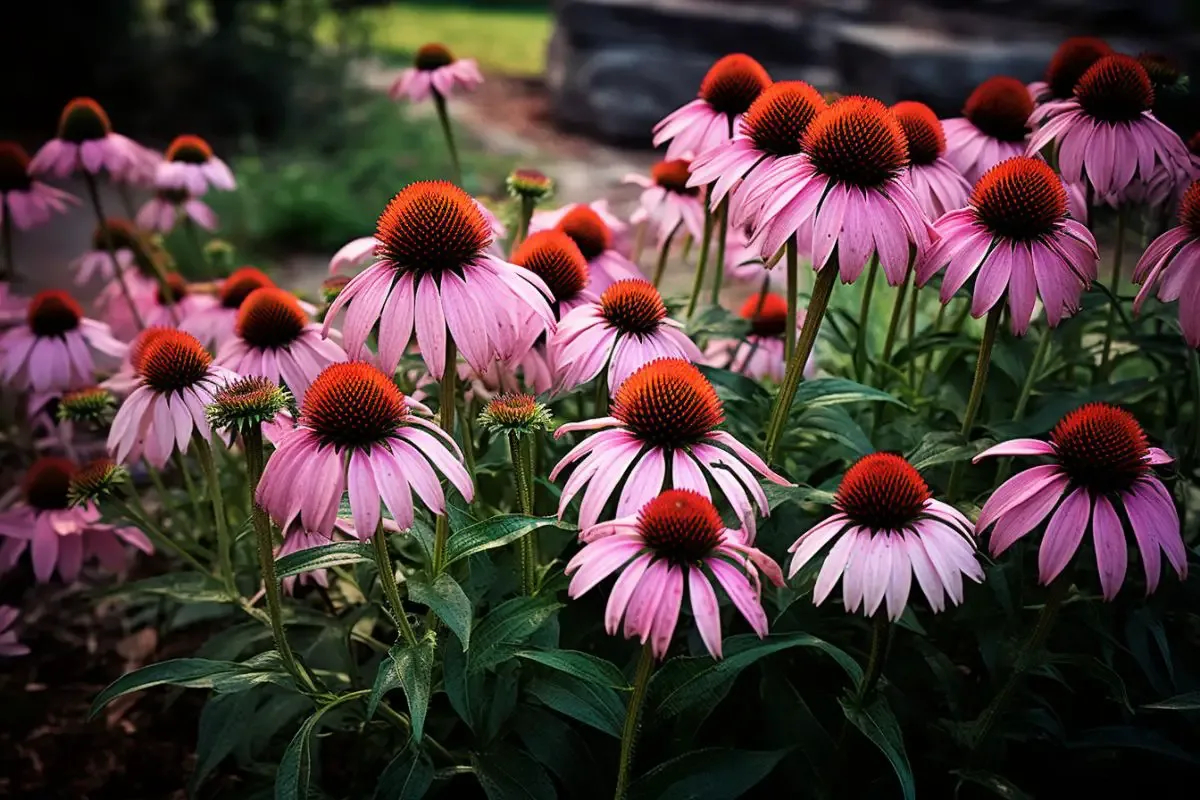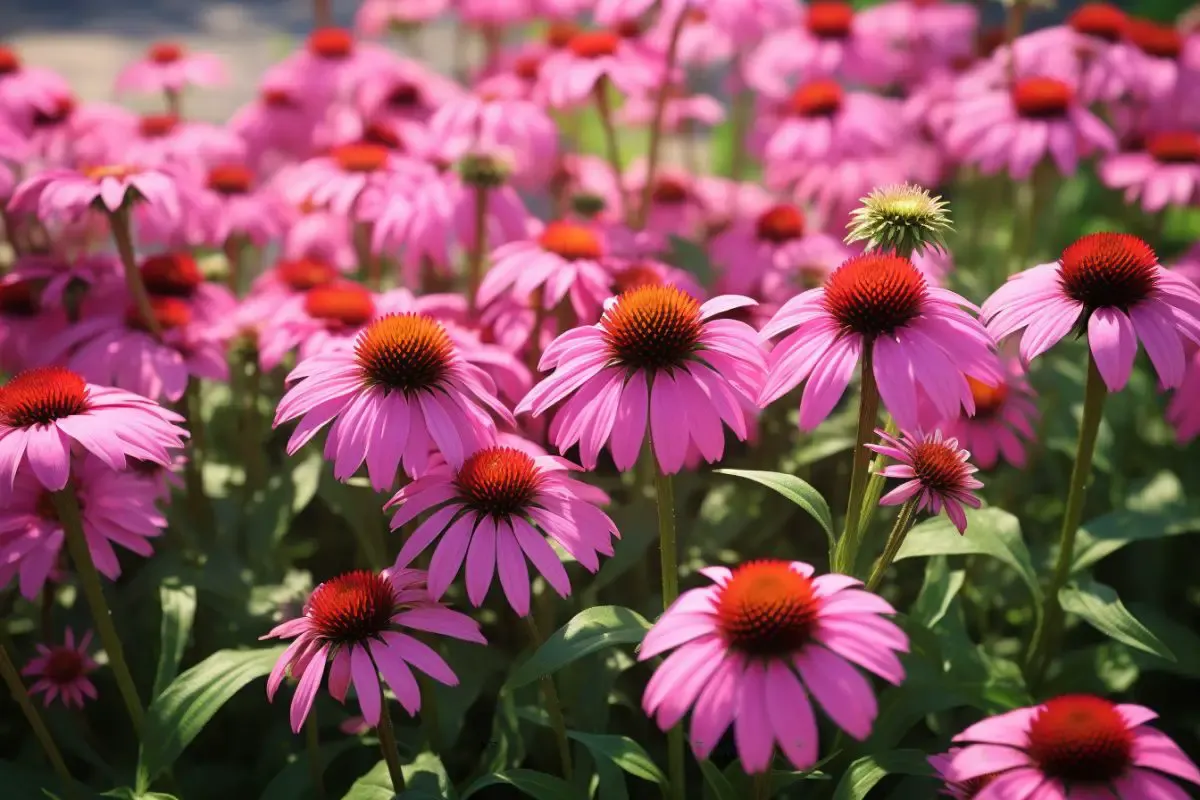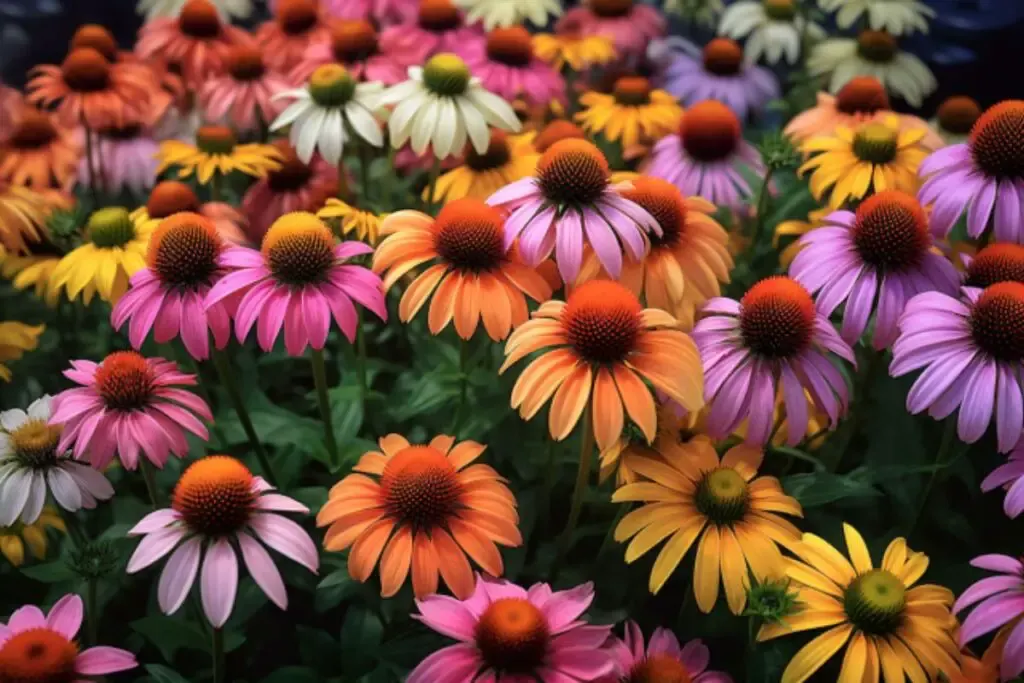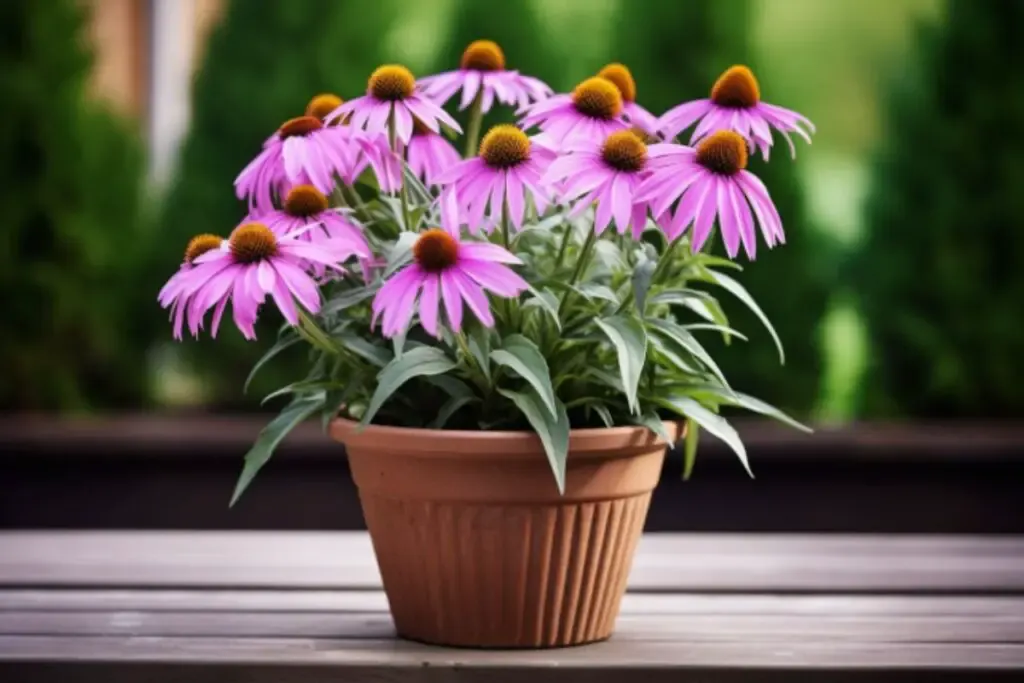There’s nothing quite like the sight of coneflowers swaying gently in the summer breeze. These hardy flowers, with their striking appearance and daisy-like shape, bring charm and character to any garden.
As an avid gardener and a blogging enthusiast, I’ve come to appreciate the splendor and simplicity of coneflowers over the years. If you’re considering adding these beauties to your garden or simply seeking advice on their care, you’ve come to the right place!
Benefits of Growing Coneflowers

1. Low Maintenance Delight
One of the primary reasons many gardeners, including myself, adore coneflowers is their relatively low-maintenance nature. They’re drought-tolerant, which means they require less watering compared to some other garden plants. This trait not only saves time but is especially beneficial during those hot summer months.
2. Pollinator Magnet
If you love watching butterflies, bees, and even hummingbirds flit around your garden, then coneflowers are the way to go. These flowers are a favorite of many pollinators.
Having them in your garden not only adds beauty but also promotes a healthy ecosystem. Trust me; there’s nothing quite as rewarding as sipping your morning coffee while watching a dance of butterflies around your coneflowers!
3. Medicinal Value
Historically, the roots of the coneflower, particularly the Echinacea variety, have been used for medicinal purposes, including boosting the immune system. While I’m no herbalist, I find it fascinating to grow a plant with such a rich history and potential health benefits.
My Favorite Coneflower Varieties
1. Echinacea purpurea (Purple Coneflower)

This is perhaps the most recognized variety and a personal favorite of mine. The Purple Coneflower boasts rich, deep magenta petals that radiate from a spiky, dark center. They’re not only visually stunning but also robust, making them a staple in my garden year after year.
2. Echinacea ‘Cheyenne Spirit’

This variety is for those who crave a splash of color. The ‘Cheyenne Spirit’ offers a mix of bright hues ranging from red and orange to purple and cream. Each year, I eagerly anticipate their bloom, as they truly add a vibrant touch to my garden landscape.
3. Echinacea pallida (Pale Purple Coneflower)

For a more understated elegance, I often turn to the Pale Purple Coneflower. With slender, drooping petals in a soft lavender hue, they bring a sense of tranquility and grace. Their unique appearance often sparks conversations during garden tours.
Coneflower Care
Caring for coneflowers is an uncomplicated and rewarding endeavor. Their hardy nature makes them relatively easy to manage, but like all plants, they do have their preferences. Let’s dive into the specifics so you can keep your coneflowers blooming beautifully year after year.
Planting

Coneflowers prefer being planted in the spring or early fall. When choosing a spot, keep in mind that these plants love room to grow. Space them about 18 to 24 inches apart to allow for adequate air circulation and growth.
A quick tip from my personal experience: When planting, ensure the crown (where the stem meets the roots) is no more than an inch deep. Planting too deep can hinder their growth.
Light
Sunlight is a coneflower’s best friend! These beauties thrive in full sun, which means they prefer a spot that receives at least 6 to 8 hours of direct sunlight daily.
While they can tolerate some shade, especially in hotter climates, less sunlight may lead to spindly growth and fewer blooms. Position them in a spot where they can bask in the sun for the best results.
Soil
Coneflowers aren’t overly picky about soil, but they do have their preferences. A well-draining soil is a must. They tend to thrive in soil that’s slightly acidic to neutral (pH 6.0 to 7.5).
If you’re unsure about your soil’s pH, consider getting a soil test. Over the years, I’ve learned that a good mix of compost or organic matter can help improve soil conditions, making it more conducive for these flowers.
Water
While coneflowers are drought-tolerant, they appreciate a good drink, especially during their first year. I recommend watering them deeply once a week, allowing the soil to dry out between waterings. Overwatering can lead to root rot, so make sure the soil isn’t staying perpetually wet.
Temperature and Humidity
Coneflowers are impressively adaptable to various temperature ranges. They can handle cold winters as well as hot summers. However, in particularly cold zones, a layer of mulch can help protect the plant’s roots.
As for humidity, these plants are forgiving. They don’t need specific humidity levels, but proper spacing, as mentioned earlier, can help avoid potential fungal issues in more humid climates.
Fertilizer
In general, coneflowers aren’t heavy feeders. However, if you’re planting them in soil that’s less than ideal, a slow-release granular fertilizer in the spring can give them a boost. From my garden to yours, I’d advise against over-fertilizing. Too much fertilizer can lead to lush foliage at the expense of blooms.
Pruning
Pruning is a crucial step in maintaining the health and vitality of your coneflowers. Proper pruning not only helps in shaping the plant but also encourages more blooms and prevents diseases. Start by deadheading spent flowers.
This simple act prolongs the blooming season and gives the plant a tidier appearance. In the late fall or early spring, you can cut back the entire plant to about 4-6 inches above the ground. This promotes new growth and ensures that the plant returns with vigor in the subsequent season.
Remember, a good pair of garden shears is a gardener’s best friend. Always ensure they’re sharp and clean to make clean cuts and prevent disease transmission.
Propagating
Ah, the joy of propagation! There’s something incredibly rewarding about multiplying your beloved plants. For coneflowers, the easiest methods of propagation are through division and stem cuttings.
- Division: The best time to divide coneflowers is in the early spring or fall. Gently dig up the plant, ensuring you get as much of the root system as possible. Using your hands or a sharp knife, divide the plant into smaller sections, each having a good amount of roots and shoots. Replant these divisions immediately.
- Stem Cuttings: In early summer, cut a healthy stem just below a leaf node. Remove the lower leaves, dip the cut end into the rooting hormone, and plant it in a pot with a mix of perlite and peat moss. Keep the soil moist, and in a few weeks, you’ll have a new coneflower plant.
How to Grow Coneflowers From Seed
Growing coneflowers from seed is a delightful project, especially if you’re looking to introduce new varieties to your garden.
- Seed Collection: If you already have coneflowers, let some of the flowers mature and dry on the plant. Once dried, you can easily collect the seeds.
- Sowing: In early spring, sow the seeds on the surface of a seed-starting mix. Don’t bury them deep; a light covering will do. Keep the soil consistently moist but not waterlogged.
- Germination: Coneflower seeds usually germinate in 10-30 days. Once the seedlings have a couple of true leaves, you can transplant them to their final location or pots.
Growing in Pots

Not everyone has the luxury of expansive gardens, but that shouldn’t deter you from enjoying coneflowers. These adaptable plants grow beautifully in pots. Choose a pot that’s at least 12-18 inches in diameter with good drainage holes.
Use a high-quality potting mix, preferably one that’s slightly acidic to neutral. Ensure the pot receives ample sunlight, and don’t forget to water regularly. Just like in-ground coneflowers, potted ones don’t like sitting in water, so ensure the soil is well-draining.
Overwintering
Overwintering coneflowers is simpler than you might think. One of the charming aspects of coneflowers is their hardiness, making them a perfect fit for many gardens.
- Leave Them Be: Unlike some perennials that need extensive winter preparations, coneflowers are pretty self-sufficient. You can leave the plants standing through the winter. This provides winter interest, seeds for birds, and can help protect the crowns of the plants from extreme cold.
- Mulching: While coneflowers are tough, adding a layer of mulch around the base can offer extra protection. A 2-3 inch layer of straw or shredded leaves can help insulate the soil, especially if you’re in a region with harsh winters.
- Watering: Before the ground freezes, give your coneflowers a good drink. Moist soil tends to insulate roots better than dry soil.
Transplanting
There may come a time when your coneflowers outgrow their spot or you want to change the design of your garden. Here’s how to transplant them with minimal stress:
- Choose the Right Time: Early spring or fall, when the plant is not in full bloom, is the best time to transplant coneflowers.
- Prep the New Site: Dig a hole twice the width of the root ball and as deep. Loosen the soil at the bottom and sides.
- Remove the Plant: Gently dig around the coneflower, ensuring you get as much of the root system as possible. Lift the plant carefully.
- Replant: Place the plant in the new hole, ensuring it’s at the same depth as it was before. Fill the hole with soil, water well, and add a layer of mulch.
Common Pests & Diseases
Every gardener’s journey comes with its fair share of challenges. For coneflowers, there are a few pests and diseases to keep an eye out for:
- Japanese Beetles: These metallic pests love munching on coneflower leaves. Handpick them off in the early morning and drop them into soapy water.
- Aphids: These tiny pests can suck the life out of your coneflowers. Spray them off with a blast of water or use insecticidal soap.
- Powdery Mildew: Recognizable by the white, powdery substance on leaves, this fungal disease thrives in humid conditions. Ensure proper spacing between plants and avoid overhead watering.
- Aster Yellows: Caused by a phytoplasm, this disease can distort flowers and stunt growth. Unfortunately, there’s no cure, so infected plants should be removed and destroyed.
Stay vigilant, and with a bit of prevention and prompt action, your coneflowers will thrive and brighten up your garden for years to come.

